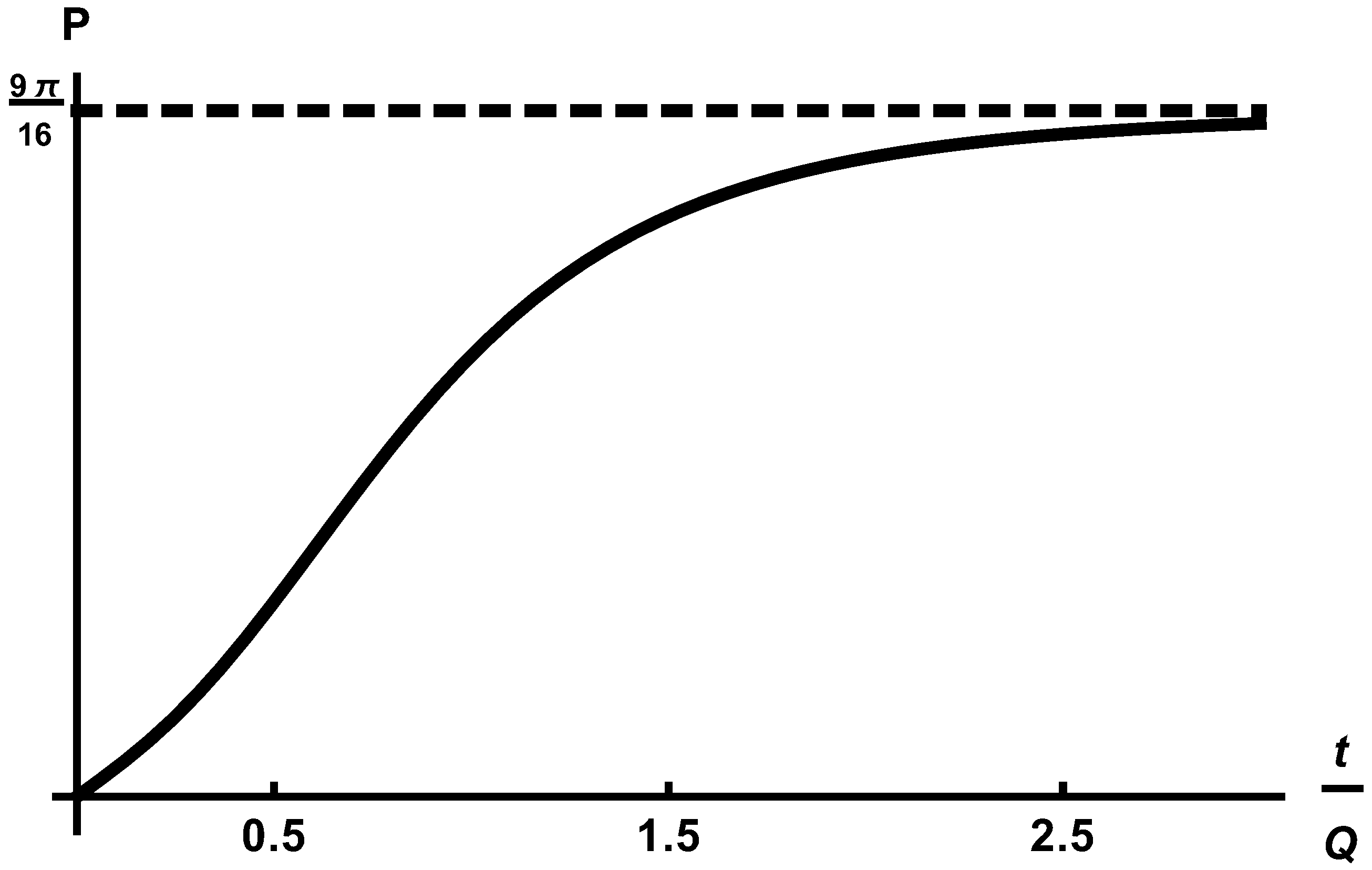Wavepacket Evolution in Unimodular Quantum Cosmology
Abstract
:1. Introduction
2. Unimodular theory
3. The Spatially Flat Friedmann Universe with a Scalar Field in Unimodular Theory
4. Classical Solutions of a Flat Friedmann Universe with a Massless Scalar Field
5. Quantization of a Flat Friedmann Universe with a Massless Scalar Field
6. Solutions with a Negative (Expectation) Value of the Hamiltonian
7. Example for a Wavepacket Evolution with a Negative Expectation Value of the Hamiltonian
8. Discussion and Conclusions
Acknowledgments
Conflicts of Interest
Appendix A. Hamiltonian Constraint According to General Relativity
References
- Kiefer, C. Quantum Gravity; Oxford University Press: Oxford, UK, 2012. [Google Scholar]
- Henneaux, M.; Teitelboim, C. The cosmological constant and general covariance. Phys. Lett. B 1989, 222, 195–199. [Google Scholar]
- Unruh, W.G. Unimodular theory of canonical quantum gravity. Phys. Rev. D 1989, 40, 1048–1051. [Google Scholar] [CrossRef]
- Daughton, A.; Louko, J.; Sorkin, R.D. Initial conditions and unitarity in unimodular quantum cosmology. arXiv, 1993; arXiv:gr-qc/9305016. [Google Scholar]
- Chiou, D.; Geiller, M. Unimodular loop quantum cosmology. Phys. Rev. D 2010, 82, 064012. [Google Scholar] [CrossRef]
- Masden, M.S. A note on the equation of state of a scalar field. Astrophys. Space Sci. 1985, 113, 205–207. [Google Scholar]
- Zayed, A. Handbook of Function and Generalized Function Transformations; CRC Press: Boca Raton, FL, USA, 1996. [Google Scholar]
- Erdely, A. Tables of Integral Transforms; McGraw-Hill Book Company: New York, NY, USA, 1954. [Google Scholar]
- Magnus, W.; Oberhettinger, F.; Soni, R.P. Formulas and Theorems for the Special Functions of Mathematical Physics; Springer: Berlin/Heidelberg, Germany, 1966. [Google Scholar]
- Robinett, R. Quantum wave packet revivals. Phys. Rep. 2004, 392, 1–119. [Google Scholar] [CrossRef]
- Craig, C.A.; Singh, P. Consistent probabilities in Wheeler-De Witt quantum cosmology. Phy. Rev. D 2010, 82, 123526. [Google Scholar] [CrossRef]

© 2018 by the author. Licensee MDPI, Basel, Switzerland. This article is an open access article distributed under the terms and conditions of the Creative Commons Attribution (CC BY) license (http://creativecommons.org/licenses/by/4.0/).
Share and Cite
Riahi, N. Wavepacket Evolution in Unimodular Quantum Cosmology. Galaxies 2018, 6, 8. https://doi.org/10.3390/galaxies6010008
Riahi N. Wavepacket Evolution in Unimodular Quantum Cosmology. Galaxies. 2018; 6(1):8. https://doi.org/10.3390/galaxies6010008
Chicago/Turabian StyleRiahi, Natascha. 2018. "Wavepacket Evolution in Unimodular Quantum Cosmology" Galaxies 6, no. 1: 8. https://doi.org/10.3390/galaxies6010008





